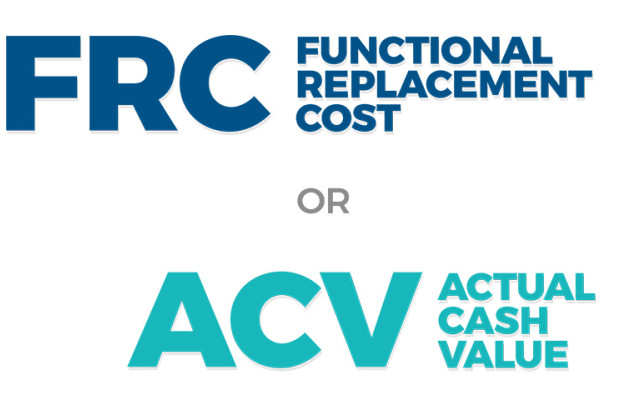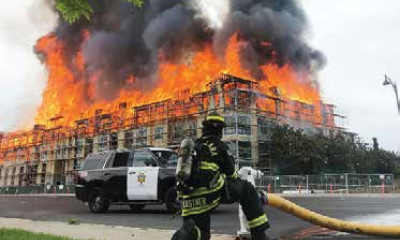A Private Adjuster's Perspective: Functional Replacement Cost or Actual Cash Value?

Functional Replacement Cost or Actual Cash Value?
In this era of high inflation and rapidly rising costs, insurers and insureds are desperately looking for ways to reduce their cost of insurance. For some, this means increasing their deductibles or establishing self-insured retention funds. For others, the exchange of location for blanket coverage is the order of the day. For still others, certain sub-limits and exclusions of coverage (e.g., floods, earth movement, etc.) are grudgingly accepted. The list goes on and on.
A couple of ideas gaining favor with both parties is the substitution of an actual cash value or a functional replacement cost valuation clause in lieu of the newly traditional replacement cost provision now found in most insurance policies.
Before exploring these latter avenues of potential savings, a few definitions and a stroll down memory lane (i.e., a touch of history) are in order.
Definitions:
Actual Cash Value:
From time immemorial, property damage claims were adjusted and paid on an actual cash value basis. It is only in relatively recent times that adjustments have been made on some form of replacement cost basis.
As a general rule, actual cash value is a measure of damage that is akin to the reasonable market value of the property destroyed. It is euphemistically referred to as old for old. Simply stated: what is the price the damaged property will bring in the open marketplace?
There are several different methods used for determining actual cash value. Each will be dependent on applicable State law. These encompass replacement cost less depreciation (some include, while some exclude, a consideration of condition and rely solely on age, functional and/or economic obsolescence); fair market value; best evidence; and the California Rule.
Discussion and application of these various methods for determining actual cash value is reserved for a future publication.
Replacement Cost:
Over time, it became more and more expensive to repair or replace damaged property. These reconstruction/replacement costs often exceeded the market value of the damaged property and the actual cash value payments received by insureds became woefully inadequate. Basically, insureds found themselves unable to rebuild or replace their lost housing or commercial buildings.
Recognizing a very lucrative market, insurance companies began to offer -- for an additional premium -- replacement cost coverage.
Under a replacement cost policy, an insured is entitled to recover the cost to replace the lost or damaged property with other property of like kind and quality and used for the same purpose. Some policies utilize the words comparable material and quality in lieu of like kind. Regardless of the actual wording, this form of coverage is metaphorically referred to as old for new.
Insureds often receive enough to duplicate the buildings lost.
Guaranteed Replacement Cost:
Under a guaranteed replacement cost policy, the insured is entitled to recover the actual amount spent to repair, rebuild. or replace the damaged property without regard to the policy limit.
For example, if the policy limit was $1,000,000 and the insured spent $2,000,000 to duplicate (either by repair, reconstruction, or replacement) what was lost, recovery in the amount of $2,000,000 would be due.
Because insureds often purchased low limits, yet exposed insurers to high pay-outs, this form of coverage fell out of favor several years ago and one would be hard pressed to find any of these policies now in existence.
Extended Replacement Cost:
As a successor for the disfavored guaranteed replacement cost policy, insurers began to sell -- once again, for an additional premium -- what is now known as extended replacement cost coverage.
Under these forms, insureds are entitled to be paid for their actual rebuild/replacement expenditures, even if in excess of their policy limits, up to a previously agreed upon percentage.
For example, if the policy limit was $1,000,000 and the insured spent $2,000,000 to duplicate and the policy contained a 50% extension clause, recovery in the amount of $1,500,000 would be due.
Reproduction Cost:
Reproduction cost policies are a form of replacement cost ones but to the nth degree. Under these forms, the insured is entitled to be paid -- up to the policy or extended policy limit -- the amount spent to fully and actually duplicate what was destroyed, not being limited to a like kind and quality or comparable materials test.
Assuming affordability, these types of coverages are usually purchased to insure historical buildings, places of worship, museums, etc. where it is of extreme importance to put back, exactly, what was there.
Functional Replacement Cost:
Functional replacement cost means the amount it would cost to repair or replace the damaged property with less-costly, common construction materials or methods which are “functionally” equivalent to obsolete, antique, or custom construction materials or methods used in the original structure.
In other words, wherever possible, substitute cheaper for more expensive -- provided the equivalency test is met.
Basically, functional replacement cost coverage is emerging as a cost-effective alternative for owners of older structures with obsolete or unique features.
Assume a building was constructed with lathe and plaster walls. While common in olden days, today lathe and plaster is rarely found. Lathe and plaster can be called an uncommon and obsolete method of construction.
Today, plasterers use blue board and a skim coat, drywall, or sheetrock. Blue board and skim coat and sheetrock are both common and far less costly than lathe and plaster.
However, there may be a hiccup depending on which “side of the fence” one sits: insurers will argue that ½-inch drywall is standard and an acceptable functional equivalent.
Insureds and their representatives, wanting more of the benefits of the old lathe and plaster (temperature control, soundproofing, stability, aesthetics, etc.) will argue -- and rightfully so -- that ¾ or 1 inch drywall or blue board and skim coat is, in reality, more functionally equivalent to lathe and plaster.
Consensus of opinion will, if the evidence and argument are adequately presented, most likely favor insureds.
What about a scenario where there are alternative common methods or materials, but a wide variance in price? Who prevails in such a situation?
For example, the destroyed building had a roof of tile, clay, or concrete. Replacement with one of these materials will be more costly than a roof of asphalt or wood shingles.
Many insurers will insist that the cost of an asphalt roof is the proper measure of recovery, arguing it is functionally equivalent (i.e., it serves as a functioning roof).
Once again, insureds and their representatives will argue to the contrary. It is well documented that the life expectancy of a tile, clay, or concrete roof far surpasses that of an asphalt or shingled one.
On a predictive note, in the relatively near future, one should not be surprised to see functional replacement clauses which no longer reference “uncommon” construction, materials, or methods. Instead, they will simply provide that, regardless of viable alternatives, the least costly construction materials and methods which function as the original will be the measure of recovery.
In conclusion, because they decrease the outlay by insurers at times of loss, actual cash value and functional replacement cost valuation clauses may result in slower rising, more stable, or reduced premiums paid by insureds. These alternatives to replacement or extended replacement coverages may be acceptable to many insureds.
However, before agreeing to such reductions in coverage, insureds should be fully cognizant of the downfalls and operation of these provisions.
There is no substitute for discussing one’s insurance policy and its contents with professionals such as Greenspan before a loss.








